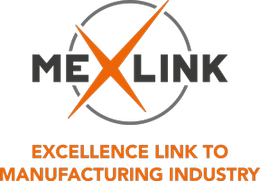The deepest essence of KAIZEN is in respecting humanity
Posted by PASI JULKUNEN

In the two previous Kaizen information attacks, Pentti Enlund opened up a view of the effectiveness of Kaizen and its organization, i.e. the KAI half. Now we dive into the ZEN section, i.e. growth as a person.
Continuous development of work and growth as a person can be seen as productivity and innovation ability. In the future, in the complex world of information, human ability will have a growing importance. The growth of automation and the Artificial Intelligence Leap require systematically managed Kaizen thinking to succeed. If this is not included in future work, we will be left at the feet of increasing costs and unprofitability. Technology needs thinking people as friends.
Good habits are a combination of knowledge, skill and will, Figure 1. Knowledge increases through research and study and answers the questions What and Why. Skill is gained by doing and answers the question How. Will develops by improving motivation and it expresses Desire. "We are how we act. Cleverness is not a function, but a way.”

Figure 1. Combination of knowledge, skill and will
But since you can't motivate anyone, we can only help people to motivate themselves better, there is an opportunity for a big leap in motivation and at the same time increasing knowledge and skills. The desire to participate in the development starts from this realization.
Described below is the continuum of how this desire to participate turns during the process into the joy of creation and ultimately respect for humanity. The path contains the P,D,C,A cycle, i.e. Deming's circle, but also very strong ZEN elements, not all of which appear in Deming's circle. Image 2 is sourced from Toyota.

Figure 2. To genuine respect for a person through the Zen path
Through the path, problems related to Q,D,C,S (Quality, Delivery, Cost, Service) topics are solved, which lead to a new updatable standard for doing work. It is also used to implement various Lean production tools such as 5S, Visual control, 3MU, Kanban, Standardized work, Suction control, Production balancing, Zero error i.e. Right once, Shortening setup times, etc. Improving teamwork skills, strengthening morale, improving motivation and increasing self-discipline are the consequences of this .
The production process is typically divided into four categories, called 4M : People ( M an), Materials ( M aterials), Machines ( M achinery) and working Methods ( M ethods).
These categories include, depending on the available production methods, different amounts of unnecessary steps, i.e. waste ( M uda), inflexibility to fluctuations in production quantities ( M ura), and overloading of people and machines ( M uri) due to load fluctuations, these are called 3MU (Figure 3).

Figure 3. Forms of waste 3MU
In order to eliminate unnecessary activities, reduce costs, improve quality, guarantee a safe workplace, meet the required production volumes and shorten turnaround times, continuous operational improvement, or Kaizen, is needed, which includes a systematic method of progress. It is a process for implementing these things and a necessity for maintaining and improving the company's profits, as well as for promoting the well-being of employees.
Different names are used for this method, depending on where the matter is being discussed and what kind of goals the interlocutors have. In his book The Toyota Way, Liker presents a seven-step problem solving process for solving large and complex problems. Masaaki Imai, in his book Gemba Kaizen, uses the name Kaizen Story or QC-Story for the eight-step problem-solving process.
It's about a standardized way of progressing to monitor the Kaizen project and record what happened during it and, above all, the results achieved, on the Kaizen project monitoring template. This tracking form is also used for reporting at all levels. The A3 problem solving process developed by Toyota was developed on this basis.
If you feel the joy of work, sit still for a while and wait for the scene to pass. That's what we tend to say if the work starts to feel good and results are produced. However, this does not have to be the case, the condition can develop.
Jukka Tammi, Ilves' goalkeeper, told coach Jukka Jalose about how good team spirit manifests itself, he said, "There is no other way to measure team spirit than on the rink. It's no use whining that there's good team spirit when we have fun together, but it doesn't show on the ice at all. The way you beat your body on the ice for the team, and fight to the end, speaks of good team spirit".
The same applies to working in a Kaizen project, the more we blow on the same coal, the more it glows and that glow illuminates far away.
In my next article, I will show how to do things in practice with the 10-step method, which includes the steps of the method presented by both Imai and Liker, added with strong ZEN steps and hockey analogies. It shows what the content of Figure 2 consists of.
Pentti Enlund, MexLink Oy
 English
English Finnish
Finnish Swedish
Swedish German
German

